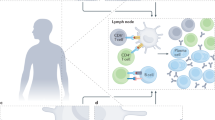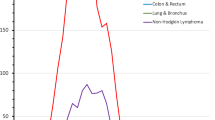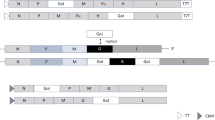Abstract
Simian virus 40 (SV40) has been detected in human tumors in over 40 different laboratories. Many of these reports linked SV40 to human mesotheliomas. The Vaccine Safety Committee of the Institute of Medicine (IOM), National Academy of Sciences, USA, recently reviewed the evidence associating polio vaccines and/or SV40 with human tumors. The IOM conclusions about polio vaccines and human cancer were: (1) ‘the evidence is inadequate to accept or reject a causal relation between SV40-containing polio vaccines and cancer’ because the ‘epidemiological studies are sufficiently flawed’; (2) ‘the biological evidence is of moderate strength that SV40 exposure from the polio vaccines is related to SV40 infection in humans’. The epidemiological studies were considered flawed because it was not possible to distinguish reliably among exposed and nonexposed cohorts. Concerning SV40, the IOM concluded that (1) ‘the evidence is strong that SV40 is a transforming virus; (2) the evidence is of moderate strength that SV40 exposure could lead to cancer in humans under natural conditions’ (IOM, 2002).
Similar conclusions were reached at an International consensus meeting on SV40 and human tumors held at the University of Chicago in 2001. G Klein and C Croce, who chaired the final panel that reviewed all the published evidence linking SV40 to human tumors, stated that ‘the presence of SV40 in human tumors has been convincingly demonstrated’ (Klein et al., 2002). In addition, a workshop organized by the Biological Carcinogenesis Branch of the National Cancer Institute, Bethesda, MD, chaired by J Pagano, has reached similar conclusions (Wong et al., 2002). Therefore, three independent scientific panels have all agreed that there is compelling evidence that SV40 is present in some human cancers and that SV40 could contribute to the pathogenesis of some of them. It should be noted that the presence of SV40 in mesothelioma and other human tumor types has been challenged by a research team that has consistently reported negative findings (Strickler et al., 2001). However, a member of this research team has recently acknowledged – in sworn testimony –sensitivity problems and possible irregularities that raise concerns about these negative reports (MacLachlan, 2002). These revelations, together with the conclusions of the three independent panels mentioned above, appear to bring to an end the apparent controversy about the presence of SV40 in human mesotheliomas and brain tumors.
This is a preview of subscription content, access via your institution
Access options
Subscribe to this journal
Receive 50 print issues and online access
$259.00 per year
only $5.18 per issue
Buy this article
- Purchase on Springer Link
- Instant access to full article PDF
Prices may be subject to local taxes which are calculated during checkout



Similar content being viewed by others
References
Bergsagel DJ, Finegold MJ, Butel JS, Kupsky WJ and Garcea R . (1992). N. Engl. J. Med., 36, 988–993.
Bocchetta M, Di Resta I, Powers A, Fresco R, Tosolini A, Testa JR, Pass HI, Rizzo P and Carbone M . (2000). Proc. Natl. Acad. Sci. USA, 97, 10214–10219.
Bocchetta M, Miele L, Pass HI and Carbone M . (2003). Oncogene, 22, 81–89.
Butel J . (2000). Carcinogenesis, 21, 405–426.
Butel J and Lednicky J . (1999). J. Natl. Cancer Inst., 91, 119–134.
Cacciotti P, Libener R, Betta P, Martini F, Porta C, Procopio A, Strizzi L, Penengo L, Tognon M, Mutti L and Gaudino G . (2001). Proc. Natl. Acad. Sci. USA, 98, 12032–12037.
Carbone M, Kratzke RA and Testa JR . (2002). Sem. Oncol., 29, 2–17.
Carbone M, Pass HI, Rizzo P, Marinetti M, Di Muzio M, Mew DJ, Levine AS and Procopio A . (1994). Oncogene, 9, 1781–1790.
Carbone M, Rizzo P, Grimley PM, Procopio A, Mew DJ, Shridhar V, de Bartolomeis A, Esposito V, Giuliano MT, Steinberg SM, Levine AS, Giordano A and Pass HI . (1997a). Nat. Med., 8, 908–912.
Carbone M, Rizzo P and Pass HI . (1997b). Oncogene, 15, 1877–1888.
Carbone M, Bocchetta M, Cristaudo A, Emri S, Gazdar A, Jasani B, Lednicky J, Miele L, Mutti L, Pass HI, Ramael M, Rizzo P, Testa JR, Weggen S and Yeung A . (2003). Int. J. Cancer, in press.
Carrol-Pankurst C, Engels EA, Strickler HD, Goedert JJ, Wagner J and Mortimer Jr EA . (2001). Br. J. Cancer, 85, 1295–1297.
De Luca A, Baldi A, Esposito V, Howard CM, Bagella L, Rizzo P, Caputi M, Pass HI, Giordano GG, Baldi F, Carbone M and Giordano A . (1997). Nat. Med., 3, 913–916.
De Rienzo A, Tor M, Sterman DH, Aksoy F, Albelda SM and Testa JR . (2002). J. Cell Biochem., 84, 455–459.
Dhaene K, Verhulst A and Van Marck E . (1999). Virchows Arch., 435, 1–7.
Emri S, Kocagoz T, Olut A, Gungen Y, Mutti L and Baris YI . (2000). Anticancer Res., 20, 891–894.
Engels EA, Sarkar C, Daniel RW, Gravitt PE, Verma K, Quezado M and Shah KV . (2002). Int. J. Cancer, 101, 348–352.
Ewald D, Li M, Efrat S, Auer G, Wall RJ, Furth PA and Hennighausen L . (1996). Science, 273, 1384–1386.
Fisher S, Weber L and Carbone M . (1999). Anticancer Res., 19, 2173–2180.
Foddis R, De Rienzo A, Broccoli D, Bocchetta M, Stekala E, Rizzo P, Tosolini A, Jhanwar SC, Pass HI, Testa JR and Carbone M . (2002). Oncogene, 21, 1434–1442.
Fraumeni JF, Ederer F and Miller RW . (1963). J Am. Med. Assoc., 185, 713–718.
Gazdar AF, Butel JS and Carbone M . (2002). Nat. Rev. Cancer, 2, 957–964.
Geissler E . (1990). Progress in Medical Virology, Vol. 37. Karger Melnick JL (ed). Basel, pp 211–222.
Gordon GJ, Chen CJ, Jaklitsch MT, Richards WG, Sugarbaker DJ and Bueno R . (2002). Oncol. Rep., 9, 631–634.
Hahn WC, Dessain SK, Brooks MW, King JE, Elenbaas B, Sabatini DM, DeCaprio JA and Weinberg RA . (2002). Mol. Cell. Biol., 22, 2111–2123.
Hanauer A and Mandel JL . (1984). EMBO J., 3, 2627–2633.
Heinsohn S, Scholz RB, Weber B, Wittenstein B, Werner M, Delling G, Kempf-Bielack B, Setlak P, Bielack S and Kabisch H . (2000). Anticancer Res., 20, 4539–4546.
Heinonen OP, Shapiro S, Monson RR, Hartz SC, Rosenberg L and Slone D . (1973). Int. J. Epidemiol., 2, 229–235.
Hirvonen A, Mattson K, Karjalainen A, Ollikainen T, Tammilehto L, Hovi T, Vainio H, Pass HI, Di Resta I, Carbone M and Linnainmaa K . (1999). Mol. Carcinog., 26, 93–99.
Hubner R and Van Marck E . (2002). Cancer Causes Control, 13, 121–129.
Innis MD . (1968). Nature, 219, 973–975.
IOM Report (2002). Immunization Safety Review. SV40 Contamination of Poliovaccine and Cancer, Stratton K, Almario DA and McCormick M (ed). The National Academy of Sciences, www.nap.edu.
Jasani B . (1999). Thorax, 54, 750 (letter).
Jasani B, Cristaudo A, Emri SA, Gazdar AF, Gibbs A, Krynska B, Miller C, Mutti L, Radu C, Tognon M and Procopio A . (2001). Sem. Cancer Biol., 11, 49–61.
Jensen F, Koprowski H, Pagano JS, Ponten J and Ravdin RG . (1964). J. Natl. Cancer Inst., 32, 917–937.
Klein G, Powers A and Croce C . (2002). Oncogene, 21, 1141–1149.
Leithner A, Weinhaeusel A, Windhager R, Schlegl R, Waldner P, Lang S, Dominkus M, Zoubek A, Popper HH and Haas OA . (2002). Cancer Biol. Ther., 1, 375–379.
MacLachlan DS . (2002). Anticancer Res., 22, 3495–3500.
Mark EJ, and Yokoi T . (1991). Ann. NY Acad. Sci., 643, 196–204.
Moorwood K, Price TNC and Mayne LV . (1996). Exp. Cell Res., 223, 308–313.
Mulatero C, Surentheran C, Breuer J and Rudd RM . (1999). Thorax, 54, 60–61.
Olin P and Gieseke J . (1998). SV40: A Possible Human Polyomavirus, Brown F, Lewis Jr AM (ed). Karger: Basel, Switzerland, pp 227–233.
Pass HI, Mew DJ, Carbone M, Matthews WA, Donington JS, Baserga R, Walker CL, Resnicoff M and Steinberg SM . (1996). Cancer Res., 56, 4044–4048.
Ramael M, Nagels J, Heylen H, De Schepper S, Paulussen J, De Maeyer M and Van Haesendonck C . (1999). Eur. Respir. J., 14, 1381–1386.
Robledo R and Mossman BT . (1999). J. Cell. Physiol., 180, 158–166.
Salewski H, Bayer TA, Eidhoff U, Preuss U, Weggen S and Scheidtmann KH . (1999). Cancer Res., 59, 1980–1986.
Shivapurkar N, Wiethege T, Wistuba II, Salomon E, Milchgrub S, Muller KM, Churg A, Pass H and Gazdar AF . (1999). J. Cell Biochem., 76, 181–188.
Strickler HD and The International SV40 Working Group. (2001). Cancer Epidemiol. Biomed. Prevent., 10, 523–532.
Strickler HD, Goedert JJ, Fleming M, Travis WD, Williams AE, Rabkin CS, Daniel RW and Shah KV . (1996). Cancer Epidemiol. Biomed. Prevent., 5, 473–475.
Strickler HD, Rosenberg PS, Devesa SS, Hertel J, Fraumeni Jr JF and Goedert JJ . (1998). JAMA, 279, 292–295.
Testa JR, Carbone M, Hirvonen A, Khalili K, Krynska B, Linnainmaa K, Pooley FD, Rizzo P, Rusch V and Xiao GH . (1998). Cancer Res., 58, 4505–4509.
Toyooka S, Carbone M, Toyooka KO, Bocchetta M, Shivapurkar N, Minna JD and Gazdar AF . (2002). Oncogene, 21, 4340–4344.
Toyooka S, Pass HI, Shivapurkar N, Fukuyama Y, Maruyama R, Toyooka KO, Gilcrease M, Farinas A, Minna JD and Gazdar AF . (2001). Cancer Res., 61, 5727–5730.
Tzeng YJ, Zimmermann C, Guhl E, Berg B, Avantaggiati ML and Graessmann A . (1998). Oncogene, 16, 2103–2114.
Waheed I, Guo ZS, Chen GA, Weiser TS, Nguyen DM and Schrump DS . (1999). Cancer Res., 59, 6068–6073.
Weggen S, Bayer TA, von Deimling A, Reifenberger G, von Schweinitz D, Wiestler OD and Pietsch T . (2000). Brain Pathol., 10, 85–92.
Wong JM, Kusdra L and Collins K . (2002). Nat. Cell Biol., 4, 731–736.
Yu J, Boyapati A and Rundell K . (2001). Virology, 290, 192–198.
Acknowledgements
Supported by grants from the National Cancer Institute, The Cancer Research Foundation of America, The Riviera Country Club in Orland Park the American Cancer Society to Michele Carbone.
Author information
Authors and Affiliations
Corresponding author
Rights and permissions
About this article
Cite this article
Carbone, M., Pass, H., Miele, L. et al. New developments about the association of SV40 with human mesothelioma. Oncogene 22, 5173–5180 (2003). https://doi.org/10.1038/sj.onc.1206552
Published:
Issue Date:
DOI: https://doi.org/10.1038/sj.onc.1206552
Keywords
This article is cited by
-
Beta-carotene exerted anti-proliferative and apoptotic effect on malignant mesothelioma cells
Naunyn-Schmiedeberg's Archives of Pharmacology (2022)
-
Establishment of immortalized murine mesothelial cells and a novel mesothelioma cell line
In Vitro Cellular & Developmental Biology - Animal (2015)
-
Benigne und maligne Pleuraerkrankungen
Der Pneumologe (2015)
-
Role of viruses in the development of breast cancer
Infectious Agents and Cancer (2013)
-
TRAIL and proteasome inhibitors combination induces a robust apoptosis in human malignant pleural mesothelioma cells through Mcl-1 and Akt protein cleavages
BMC Cancer (2013)



